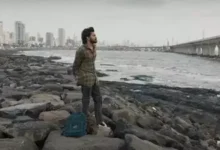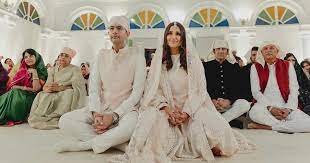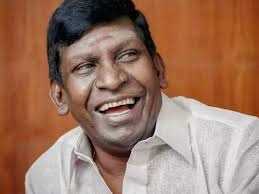Review of “Swatantrya Veer Savarkar”: Randeep Hooda’s film has more hero worship than facts
One of the assignments for my class 8 examinations was to compose a “fictional story.” Allowing my imagination to go wild inspired me to compose a suspenseful horror thriller. Even though I had a good grade, my instructor wrote, “Please write short essays,” on the paper when the results were in. The phrase still bothers me since it made me feel hurt that my originality wasn’t valued. As I sat through the three hours of “Swatantrya Veer Savarkar,” I was able to find salvation. Despite my best attempts to fully support Randeep Hooda’s endeavors as an actor and first-time filmmaker, the biopic’s length sapped my excitement, and I left feeling depleted rather than informed.

The movie aims to bring attention to the little-known tale of independence fighter Vinayak Damodar Savarkar, who is regarded as the true hero of our struggle against the British. The narrative delves into his quest for ‘Akhand Bharat’ and his devotion for it, even approaching the path of worship. It talks about the supposed plot to deny him his proper position in Indian history and the roll call of illustrious liberation warriors.
It also illustrates Savarkar’s intellectual disagreements with Mahatma Gandhi, including his doubts about the title given to him. Additionally, it suggests that Savarkar was the inspiration for the majority of our country’s heroes, including Netaji Subhash Chandra Bose, Bhagat Singh, and Khudiram Bose. Many people continue to dispute this reality.
“Swatantrya Veer Savarkar” lacks depth, which leaves you disappointed even with some excellent performances. The montage of him losing his kid while studying in London is a waste. His conversations with his allies are shown as them reciting “Vande Mataram” and taking pledges.
Their love and enthusiasm for the nation never really come through to us. For the most part, we wish the content was as genuine as Randeep’s dramatic weight reduction experience. Sadly, the very poor script undermines his efforts by failing to arouse any feelings. Ultimately, it is shown to be an effort to simplify and present Savarkar’s tale to viewers in a one-dimensional manner.
With his bespectacled, piercing appearance, and curled lips, Randeep Hooda makes an effort to emulate Savarkar. In the parts when he breaches the fourth wall and addresses the audience directly, he really excels. But the performance isn’t as steady as we would have liked.
We recognize that directing a movie of this magnitude and putting on a performance that physically cost him his blood and sweat was an enormous task for the performer. He attempted to balance both responsibilities in an ambitious effort, but unhappily, he struggled a lot. In the other film out this week, star Kunal Kemmu also makes his directing debut. But he resisted the need to narrow his attention to just one direction, and the consequences are clear to observe.
Then, as Ganesh, Damodar’s older brother, who was the wind behind his wings, Amit Sial excels. Watching sequences with Randeep and Amit is enjoyable and might even bring tears to your eyes, particularly when they rejoin after serving nine years in prison. Although she doesn’t have much to do, Ankita Lokhande provides an honest performance, and Mrinal Dutt, who plays Madan Lal Dhingra, does the same.
Regarding Rajesh Khera’s portrayal of MK Gandhi, you may be reminded of his old TV advertisements for Onida. The political leader has a negative tone that eventually becomes sour since the story is told from Savarkar’s point of view. Furthermore, you get the impression that Savarkar’s sneer, “Gandhi, itna bada hogaya,” was motivated by more than simply their divergent views on violence.
The Congress is presented as the antagonist and the cause of the division. It goes so far as to suggest that the party was complicit in Gandhi’s murder, even as Savarkar queries why he wasn’t given protection.
The list of propaganda movies grows shortly before election season kicks off with the addition of “Swatantrya Veer Savarkar.” Randeep Hooda discusses Hindus and Hindutva, a hot subject in the modern day, on several occasions. He also compares Muslims to Hindus at one point if they think they own the nation. He continues by giving the majority’s suffering, which has been disregarded for years, legitimacy. Savarkar’s repeated appeals for mercy to the British and his pledges to support them have been attempted to be used against him by portraying them as necessary gestures intended to arouse compassion.
The opening line of the movie states that while it is often believed that India gained its independence through nonviolence, this is not the true tale. However, the movie ends up being more about a man’s journey than India’s journey to independence, despite what is said. The non-violence act was disregarded in a number of previous movies, and the “josh” was contagious.
There were times when I wanted to watch “The Legend of Bhagat Singh” at home to satisfy my patriotic urges while I was viewing the movie. And that’s the root of the issue. It came out that “Swatantrya Veer Savarkar” was a flimsy effort. All it can be accused of is a protracted, often biased history lesson on the “neglected” freedom warrior.







